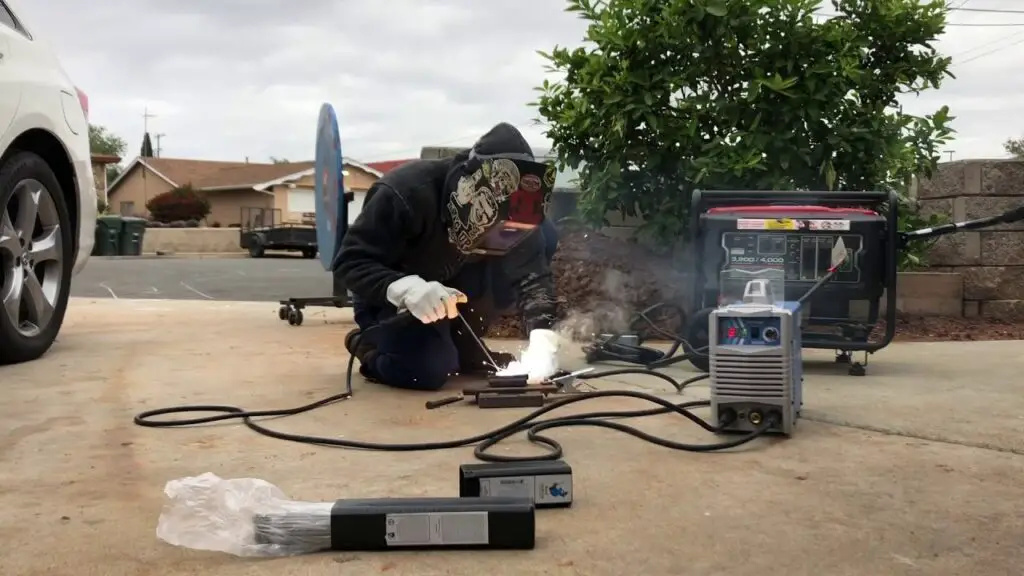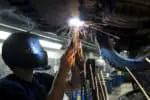Knowing the wattage requirement of your welder is a prerequisite for a welding procedure that you are sure to stay within your budget. Wattage directly denotes the power consumption, which determines a major part involved in the cost of the procedure.
Calculating the wattage requirement of a welder is difficult. In very basic terms, the product of voltage and amperage gives the wattage value you are looking for. From this, you will get a rough idea about the wattage consumption of your welder.
Let’s see this in detail and go a little beyond.
Know the basics
Before we get into the calculation part, let’s just rush through some terms that you need to know for knowing the wattage. They are:
Volt
A word that you are familiar with, volt or voltage as you may like to call is nothing but the difference or gap between two points in terms of their electric potential.
Voltage pushes the electrons to flow through the circuit to ignite the part that they are supposed to. Here, your machine needs to be kicked on to get those metals welded!
Amperage
Amperage (denotes the strength of the electric current. It is the count of electrons that flow through the circuit. It can also denote the maximum level of electricity that can flow through the circuit. Amperage is
What is a watt?
A watt is a unit measuring the rate of energy transfer. Knowing the wattage of the welder can help you and here is how you find it!
Use the formula given below to find the wattage requirement of your welder:
Watts = Volts x Amps
For example: Watts = 25V X 200 Amps = 5.000watts
Should I add more to the calculated result?
Yes, you will have to add a 30% more to the result you get from the above formula for welding machine wattage consumption is slightly higher when the machine is switched on. This is called as surge watt of a welder.
Take 30% of the result and add it. This will give you an idea as to how much current will be used for the procedure in total.
30% of 5.000 = 1.500
So total wattage use = 6.500 watts.
Does knowing the wattage mean I know the power consumption of my welder?
No. Only knowing the wattage does not give you the exact amount of power consumed by your welder. To know the power consumption of your welder you need to do a little more.
Power consumed by your welder = watts X number of operational hours
Example: power consumed = 3000W X 2 hours = 6000 Wh or 6kwh
This means the power consumed by your welder after working for 2 hours is 6kwh.
When does the rated efficiency of the welder come into play?
Rated power is the maximum current that will flow beyond which the flow will break. This helps in understanding the capability of the machine. The power consumed can be lesser than the rated power or equal to it.
Rated power= Wattage/efficiency
For example, if the wattage of your welder is 3000 W and the rated efficiency is 0.89 then the rated power is:
3000/0.89= 3.370kW
Understanding the rated power of your welder will help you put a bar on the cost that you need to incur for the procedure. This way you can be sure that the expense will not go beyond the limit that you have fixed based on the rated power.
Should I use a generator to run my welder?
When talking about power consumption we need to mention generators. Welding generators help to reduce the power consumption of your welder from the main source of electricity.
Just like other generators, welding generators run on fuel and can play a significant role in reducing the cost of electricity involved in welding.
Choosing your generator for a welder might involve some calculations however you can also go by a chart that might come in handy if you are running short in time.
| Welder Amperage | Minimum Generator Size | Recommended Generator Size |
| Up to 100A | 3000 watts | 4500 watts |
| 120–160A | 4500 watts | 6500 watts |
| 180–200A | 6500 watts | 8000 watts |
| 210–250A | 10000 watts | 13000 watts |
Moreover, here are a few YouTube videos explaining a little bit about how to choose a welding generator.
https://youtu.be/ww-e0aLAVxg
Using an inverter-based welder is highly recommended for efficiency due to its stable arc. Unlike transformer-based welders, these are based on advanced technologies that make them better than their older counterparts.
If you are looking to buy a new welder generator, I recommend an inverter-based welder for it has numerous advantages including portability and lightweight.
Conclusion
Getting to know the wattage requirement is important for various reasons. Before you decide to buy a welder, do go through all the essential details to have a power-efficient welding experience.
If you enjoyed reading the blog, do check my other writings!







